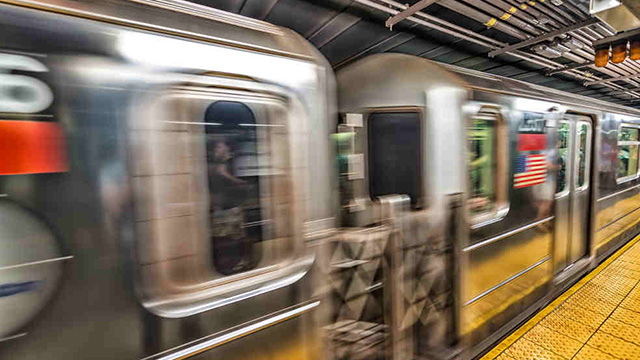
This administration ran on a campaign message of “change”, underpinned by many ambitious promises, spanning wage increases for the security sector, ending contractualization, providing free irrigation for farmers and free college education for youth, bringing peace and development to Mindanao, easing the plight of OFWs and SMEs facing government red tape, ending Asia’s longest lasting communist insurgency, and fueling development with an infrastructure boom not witnessed in the country’s long history.
These are all lofty goals, and it seems the DU30 administration, in its haste, favors a decisive role for the public sector in spurring investments in multiple areas. I will call it GGG – comprised of approaches like government to government (GtoG) transactions, and government led (sometimes ODA-financed) public spending and investments.
The problem with this model is that it actually does not signal “change”—the heavy government approach is associated with old (and some still existing) strategies that have distinct examples of failure, due in large part to corruption and governance issues.
Any assessment of the DU30 administration should focus on the forest rather than the trees. The real issue to look out for in the past year (and in the remaining 5 if you ask me) is who wins the struggle between two approaches to governance: a heavy government intervention on the one hand vs a more balanced approach that involves government, private sector and civil society engagement on the other.
Golden age of infrastructure 2.0

The administration aims to ramp up infrastructure investments to the tune of over P8 trillion from 2017 to 2022, increasing infrastructure spending from 5.4% of GDP to 7.4% of GDP within this period.
Of the entire amount, about 66% will be drawn from local financing, 18% will be financed through public private partnerships (PPPs) and 15% will be financed using official development assistance (ODA).
The government says it has opted for a “hybrid model”, which sees the government undertaking construction using public funds or local borrowings and ODA, and then subsequently transferring operations and maintenance to the private sector. Essentially, the infrastructure construction will be government led under this model.
ODA-financed and government-led infrastructure projects could benefit from the technology and other advantages of the donor; and theoretically, the government could save by obviating private sector profits (at least on the construction part).
But there are historical examples of corruption tainted government-led deals when pursuing this approach. This “golden age” of infrastructure was already attempted before.
Government gone wrong
The Bataan Nuclear Power Plant probably best epitomizes the large white elephant project of governance gone wrong. It was a project that did not go through proper government bidding, and it was brokered by a government insider with a direct line to President Marcos. Its costs and final price tag escalated, even as the plant did not produce any electricity, while burdening the Filipino people with about US$2 billion in debt.
The ZTE-national broadband network (NBN) scandal is another example of a corruption-tainted government led project. In a striking twist of fate, all the personalities involved in that corruption scandal have been set free (except the whistleblower who eventually landed in jail due to an entirely different corruption case). And what’s more, the Chinese company ZTE, is reportedly interested to engage in another project in the Philippines, this time under the DU30 administration.
Both deals involved local financing and some form of concessional financing (respectively loans from US Export-Import Bank for the BNPP and from the Export-Import Bank of China for the ZTE-NBN). Both allegedly involved brokers that pushed for the projects and received large kickbacks.
To be fair, even under previous administrations, the approach will ultimately strike a balance across government and PPP projects. Even under PNoy, and despite the push for PPPs, the bulk of infra was still government led. There were also some successful ODA/government projects (e.g. the Japan Philippines Friendship Highway). There were also some bad PPPs—NAIA Terminal 3 and its failed build-operate-transfer (BOT) with the PIATCO led consortium is an example.
Under PNoy, PPPs were re-emphasized based on good governance objectives. PPPs were supposed to change this long history of corruption-tainted big infrastructure projects, by increasing competition on these projects and by default involving more eyes scrutinizing the project, especially from civil society and the private sector.
PPPs appear to be in the background now under DU30, compared to their more prominent role under PNoy. Clearly, this renewed emphasis on government needs to be monitored closely.
Rice policy: DU30 vs PNoy
The recent debates on the country’s rice policy also highlights the tension between government-to-government deals versus an approach that involves the private sector through more competition.
The failed rice policy under PNoy saw rice importation face many scandals – the National Food Authority (NFA) became a picture of inefficiency (having failed to stop increasing rice prices) and corruption (being embroiled in import permit recycling).
In his agency’s last poverty report before the elections, then NEDA Secretary General Arsi Balisacan lamented that even as 30% of income earners saw their incomes increase by 2015—and much of this concentrated among the poorest – almost all of this was wiped out by inflation, a large component of which was due to high rice prices.
Perhaps the greatest travesty of the last administration’s schizophrenic food security policy lay in its departure from its own “daang matuwid” and failing to stop corruption in the food sector. This ultimately undermined the gains in pro-poor income improvements and poverty reduction that the administration should have been able to leverage going into 2016.
Retooling rice policy
Fast forward to 2017: Cabinet Secretary Jun Evasco recently faced down a recalcitrant NFA head who insisted on government-to-government (GtoG) procurement of rice, which is well known to be highly susceptible to corruption. Instead Secretary Evasco has been able to push for private sector importation, in the face of opposition from the Department of Agriculture and NFA insiders.
Furthermore, a departure from importation quotas (subject to strong rent-seeking for access to quota permits) could be in the works as reformists are pushing for a shift from quotas to tariffs on imports. This of course does not obviate the role of government as regulator—indeed the NFA will still play a role in ensuring sufficient buffer stock. The additional plus is that tariff revenues can be used to support farmers to transition to more competitive crops.
Government still needs to push for legislation on this, to resolve it with finality, and to ensure that we comply with international trade commitments.
Nevertheless, these shifts – from G-to-G to private importation, and from quotas to tarrification—are expected to increase the role of the private sector, ease rent-seeking in the NFA, as well as prompt more efficient rice importation. All of this, in turn is expected to lead to more affordable rice for consumers.
Change has come?
Clearly the two examples paint a mixed picture of the DU30 governance and development model.
In all fairness, this mixed picture is not new at all – most if not all administrations before DU30 displayed the same schizophrenia. Ultimately, what we probably need is not GGG-only or PPP-only, rather a more balanced approach that significantly lowers the risk of governance failure.
Similar to the past, there are internal battles being fought as regards the right balance between state and market. And this is not a philosophical debate belabored by technocrats – it is more often a struggle involving the corrupt who want to preserve their self-interest versus reformists advancing the public good. – Rappler.com
Ron Mendoza is Dean and Associate Professor of Economics at the Ateneo School of Government. Without implicating them, he thanks Alvin Ang and Romy Bernardo for useful comments on an earlier draft.